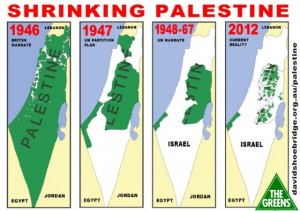Land Ownership in Palestine/Israel
 Monday, May 19, 2014 at 8:49AM
Monday, May 19, 2014 at 8:49AM  Gilad Atzmon
Gilad Atzmon
By Nasser Abufarha
http://www.ap-agenda.org/nasser/nasser3.htm
Control over territories, land use, and ownership are central issues to the Palestinian-Israeli struggle. What follows is a historical overview of the system of land ownership in Palestine, including an examination of the methods by which the Israeli government and Jewish agencies acquired land in Palestine.
Palestinian Land Ownership
The majority of the lands in Palestine were the properties of the Palestinian rural population, the fellahin. In the process of the creation of the state of Israel, over 418 Palestinian villages were depopulated and destroyed. Bedouin semi-nomadic tribes were displaced and 104 Palestinian populated villages remained under Israeli control.
Understanding the culture of the fellahin is key to understanding the system of land ownership in Palestine. Referring to the fellahin of Palestine as peasants, as they are often referred to, is an unfair misrepresentation of Palestinian society and culture to say the very least. A peasant in European culture is a farming worker with little or no land ownership. The fellahin of Palestine are rural farming communities with communal shared ownership of the land and own the means of cultivation.
The concept of the peasant did exist in the culture of the fellahin and the term applied to it is qatruz. The qatruz is a farming worker with little or no land ownership that has no possession of working animals. The qatruz would work for landowners for a share of the harvest. Although the concept of the peasant (qatruz) existed in Palestinian society, it was not widespread due to the communal nature of the culture of the fellahin.
To understand the land ownership system in the society of the fellahin, one needs to understand the concept of the feddan. There is widespread misconception that the feddan is a unit of measurement for an area of land. This is an inaccurate understanding of the concept. The feddan is a measurement of a share of land that varies in size from village to village and may vary from year to year, even within the same village.









